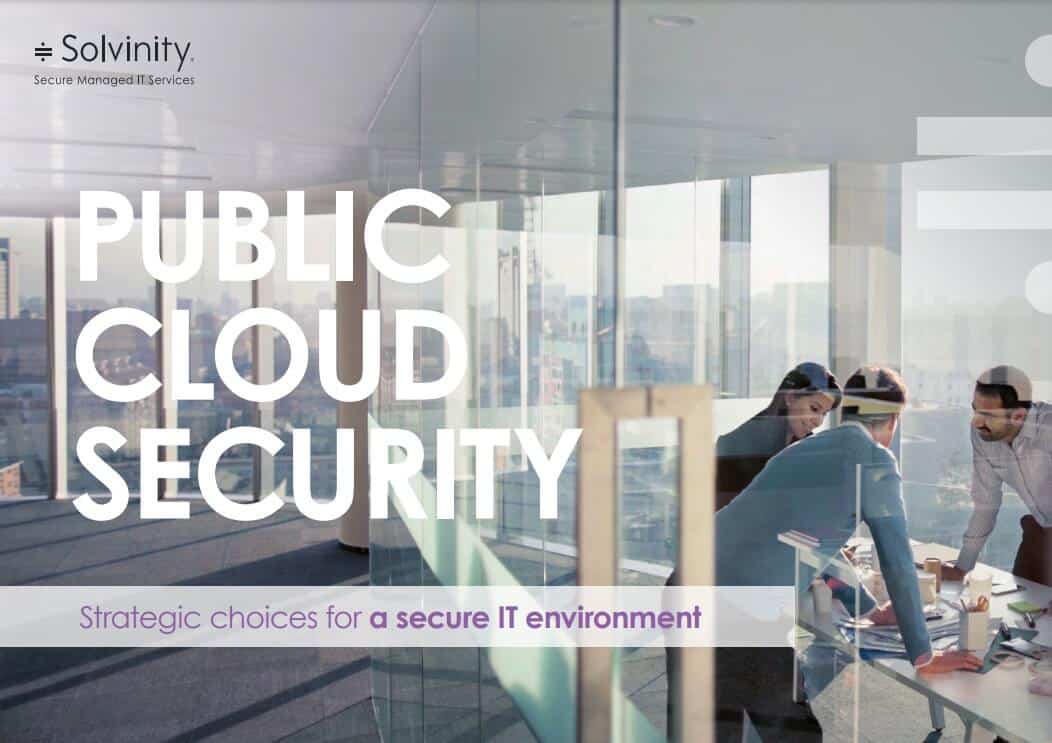Secure
Managed
cloud
A secure foundation for your IT
Are you in search of a competent partner when dealing with your IT? If you want a secure and reliable IT environment, Solvinity offers you what is required. You keep control of your IT while your organisation grows responsibly.
Our IT Services
Services
Managed cloud | For pure focus on the future
Take advantage of a solid IT infrastructure to fully focus on the future of your...
READ MOREManaged Application Services | For optimal performance and control
Your applications optimally available, secured and equipped with the latest updates? Read more about Managed...
READ MOREManaged Security Services | With secure, responsible and future-oriented technology
Need security for your data, IT infrastructure and communication? Read more about Managed Security Services.
Service Integration & Management
Need a partner for the optimum quality of your IT operation? Read more about Service...
READ MOREManaged Cloud Services | Transform your IT environment
Is your organisation ready for the next step in its Cloud transition? Transform your IT...
READ MOREIT Outsourcing
Focusing on your core tasks, while retaining control of your IT? IT Outsourcing is the...
READ MOREBranches
Branches
Reliable and secure IT environments are needed in every industry but indispensable in some industries. That’s why governments, financial institutions and the business service industry rely on our solutions. Choose a sector and read about your options.
Financial institutions
Security first, structured overview and a flexible IT environment offering the best customer experience. That’s exactly what we do at Solvinity. It’s our essence.
- Klaverblad
Business services
More speed, functionality and (self) service for your customers? Solvinity offers you the solution: a stable IT environment. Which is why business services enjoy fruitful cooperation with us.
- Zig Websoftware
Certifications, reports and partnerships
certifications
Assurance reports
With our SOC reports for the private cloud and Azure public cloud, you can be sure that your data is in good hands. Are there payment details to process? We provide a PCI DSS certification specifically for your environment.
- SOC 1 & 2
- PCI DSS
Cloud partnerships
Looking for a safe and controlled way to move to the public cloud? As a partner and specialist for the two largest public cloud providers at this moment, we can help you make the right choices and set up the right environment for your organization.
- Microsoft Partner
- Google Cloud Partner
- AWS Consulting Partner
Vacancies
Vacancies
Great challenges for new Solvineers

Public Cloud Security whitepaper
Strategic choices for a secure IT environment
Learn how to set up your public cloud environment securely and avoid unnecessary costs and risks. Download this white paper and discover the most important points of attention and concrete tools for a solid security strategy in the public cloud. With the right choices in advance, protect your organisation against cyber attacks. Strengthen your public cloud strategy today!

Latest updates
Updates
From Fragmentation to Clarity: the Power of the Hybrid Cloud
What is a Hybrid Cloud and what are the benefits? Discover when a combination of a...
READ MOREStatement intended acquisition by Kyndryl
Last week, Solvinity announced its intended acquisition by Kyndryl Netherlands, a leading provider of technology services...
READ MOREThe Silent Threat of False Security
Discover why organisations do invest in measures, but often lack the oversight and knowledge to properly...
READ MORE
Sign up for the
Solvinity Newsletter
Receive the latest news about our services, interesting blogs, papers and articles. We like to keep you informed about:
